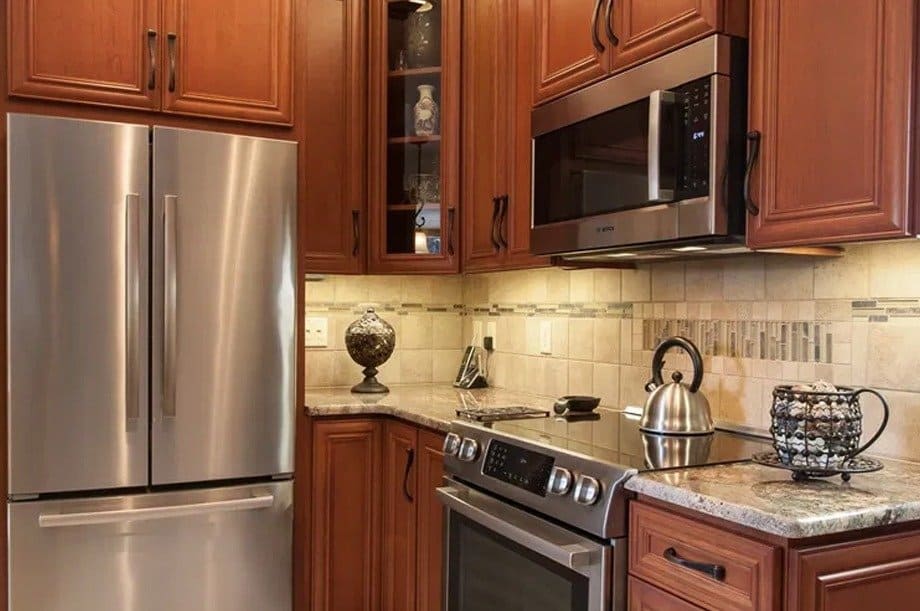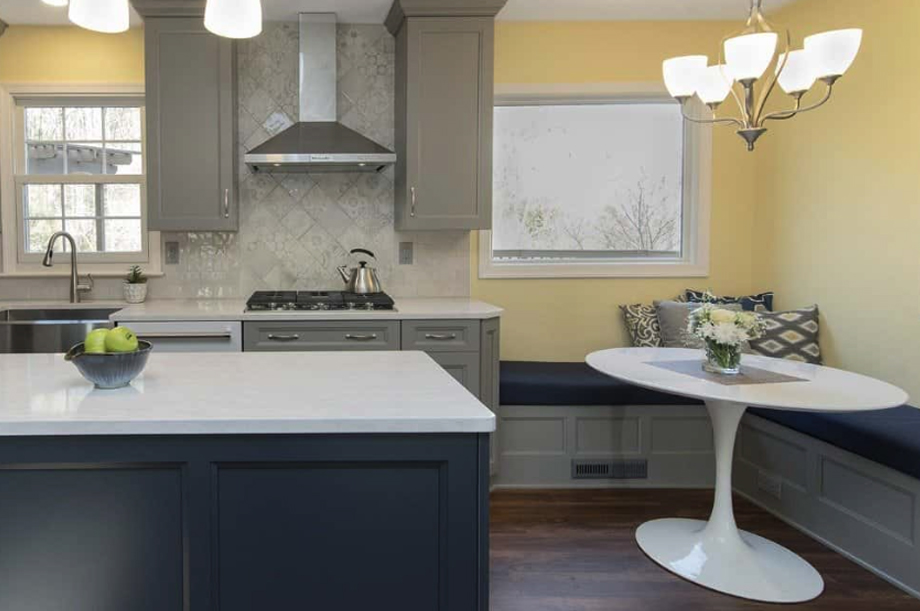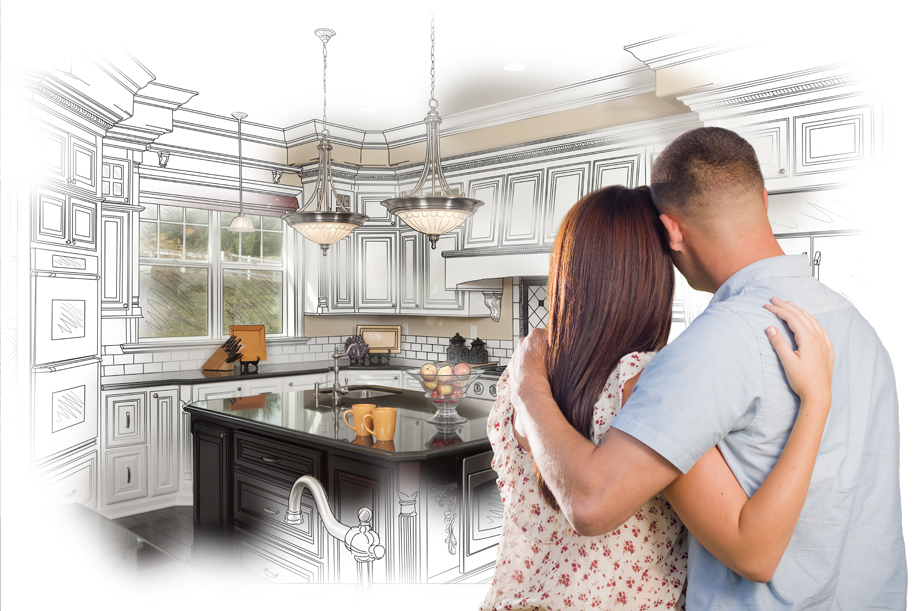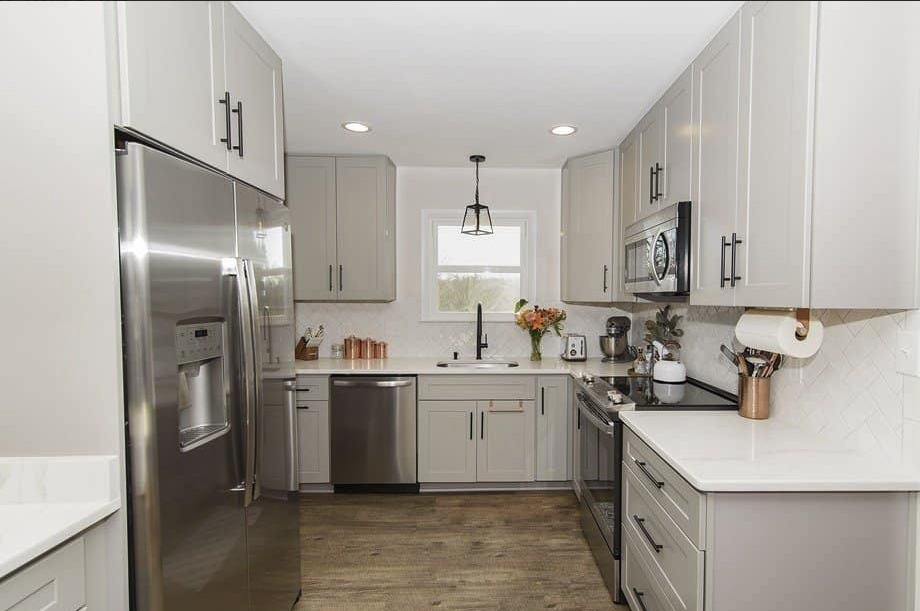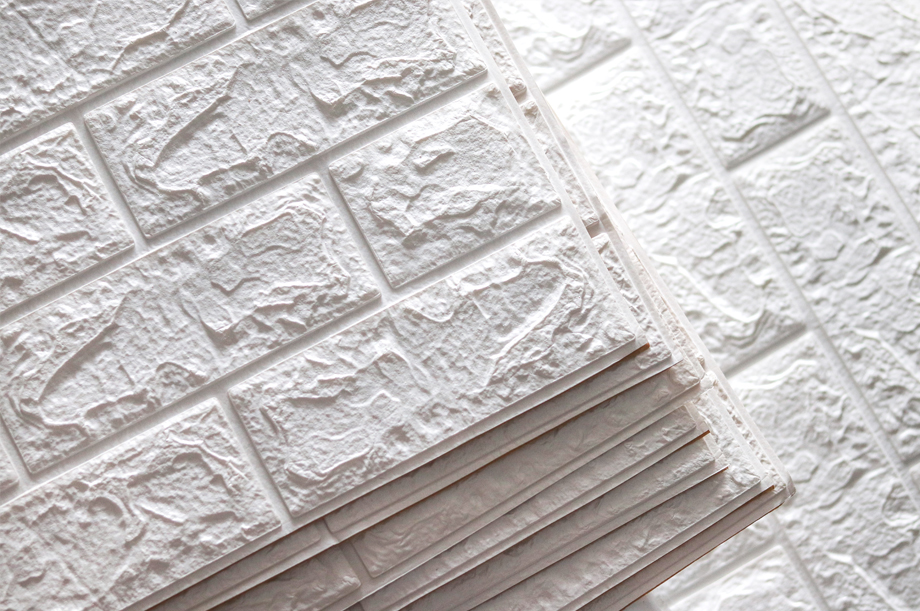Kitchen backsplashes are practical and beautiful at the same time. They make for easy cleaning during those inevitable kitchen messes, and they add to the overall design of the kitchen. One question we hear a lot during our design consultations is, “Where should my kitchen backsplash start and stop?” The answer depends on your home, your aesthetic, your budget, and more. Here are some backsplash placement tips to help you decide for your home.
Basic Guidelines for Kitchen Backsplash Placement
There are many factors that influence where your kitchen backsplash starts and finishes. You may have an obvious row of upper and lower cabinets that need a backsplash in between. For less obvious circumstances though, here are some guidelines:
- Put a backsplash anywhere food prep will occur. The main purpose of a backsplash is to make for easy cleanup. Run your backsplash along the walls of the kitchen adjacent to your food prep areas.
- Run your kitchen backsplash between upper and lower cabinets. The backsplash connects the two sets of cabinets, which helps the room feel bigger and more cohesive.
- Do not put a backsplash behind your fridge unless you can clearly see that wall. In most cases, the space behind the fridge is not visible anywhere in the kitchen. There is no need to spend money on labor and materials for a place you will not see.
- Do put a backsplash behind your cooktop and hood vent. Many homeowners will put accent tile behind their cooktop and hood vent to act as a feature in the kitchen. Grease, bubbling sauce, steam and other elements coming from your stove make for a messy cleaning job. Having a backsplash there will eliminate the headache.
- Use your cabinets to mark the end of your backsplash. You can extend the tile beyond the cabinets, but this marks a logical ending for the backsplash.
Should I Run My Backsplash to the Ceiling?
In terms of how high your kitchen backsplash should be, that’s up to you. Many homeowners stop their backsplash level with the bottom of their upper cabinets. However, some choose to take the tile all the way up the ceiling. This can make the kitchen feel taller, drawing the eye up the wall. It can also make open shelves and other features stand out, depending on the style of backsplash you select. Running the backsplash to the ceiling tends to create a more ‘high end’ look.
Use Your Backsplash to Create a Focal Point
Since your backsplash makes up the bulk of the wall space in your kitchen, use it as an opportunity to create a focal feature. You could run mosaic tile vertically from your range all the way to the ceiling. You could have a set of accent tile above your sink. Don’t be afraid to do something a little different to make your kitchen design completely custom.
What If My Upper Cabinets and Lower Cabinets Don’t Align?
This is one of the main reasons people ask, “Where should my kitchen backsplash start and stop?” If your upper and lower cabinets do not align, you have a few options. You could stop the backsplash where the upper cabinets end, but we usually recommend lining up with the base cabinets. You could also taper your tile or angle your stone backsplash to gradually connect the top to the bottom. Yet another option is to line the backsplash up with the base cabinets, then run the backsplash all the way up to the ceiling. This is a good choice in open concept spaces because it helps establish a zone for the kitchen.
Look for a Natural Stopping Point
The best rule for kitchen backsplash placement is to look for a natural stopping point. This could be a wall, a window, a cabinet edge, or anything else in between. You can use tile edging trim or bullnose tile to create a distinct edge for the backsplash. You could also use a creative edge design, such as tapering a set of hexagon tile away.
If you opt for a full kitchen remodel with O’Hanlon Kitchens, we will discuss exactly where your kitchen backsplash should start and stop. Contact us online or give us a call at 443-285-0558 to schedule your design consultation.


